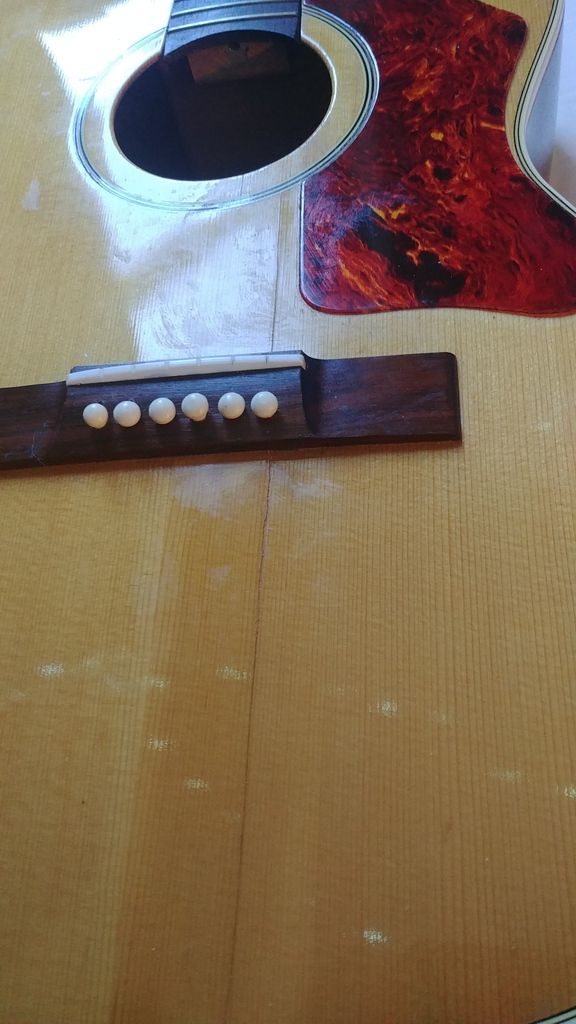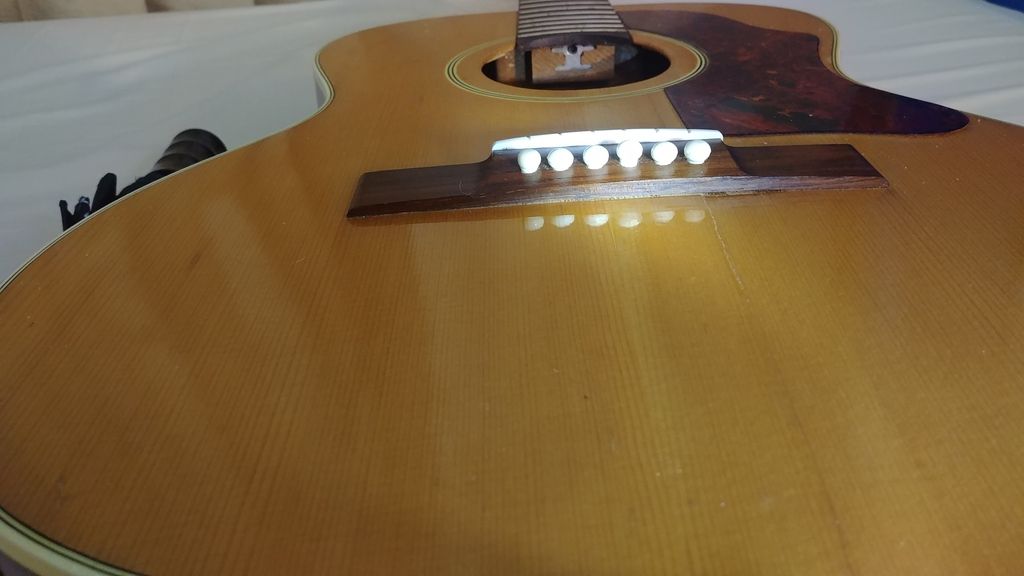
 |
|
#16
|
|||
|
|||
|
Fred, 'It's my guitar and I'll do what I want to it." would have more impact if you would sing it!
|
|
#17
|
|||
|
|||
|
Oh it would have an impact, not sure if that would be a good thing.
__________________
Fred |
|
#18
|
||||
|
||||
|
Quote:
Quote:
Quote:
So, I'm looking for other people in the area and have been talking with other players who have done amateur repairs. Not to discredit the idea of taking it to a luthier, but so far it's been near extortion, and the best practical in-person advice I've gotten has been from a classically trained friend turned amateur repairman, who's given me the most worthwhile discussion and options to consider. Here's a picture of the crack I mentioned   Quote:
In fact, I would guess that the crack in it is from the very thing you mention - someone stringing it with steel strings. I know for a fact that its prior owner had steels on it, and know they were advertised by Hagstrom, for whatever reason, as being steel string folk guitars. Oh, you crazy 1960's |
|
#19
|
|||
|
|||
|
With the hole through the brace it is not doing much anyway. The bridge plate in place of it will do more structurally than what you have. Just cut the plate a little over size and place it in and check, sand a little, check, sand a little...
__________________
Fred |
|
#20
|
|||
|
|||
|
Quote:
|
|
#21
|
|||
|
|||
|
Most luthiers who offer their services for money, would do a repair with the thought process of it being functional and long lasting (well I would hope so),as such, costs are involved.
Amateurs look at how they get just get it working, they typically have no understanding or wood/grain/runout/bridge rotation etc, as such no real thought is given to the long term prospects of the instrument. The point, if your not doing it yourself then you get what you pay for. Steve
__________________
Cole Clark Fat Lady Gretsch Electromatic Martin CEO7 Maton Messiah Taylor 814CE |